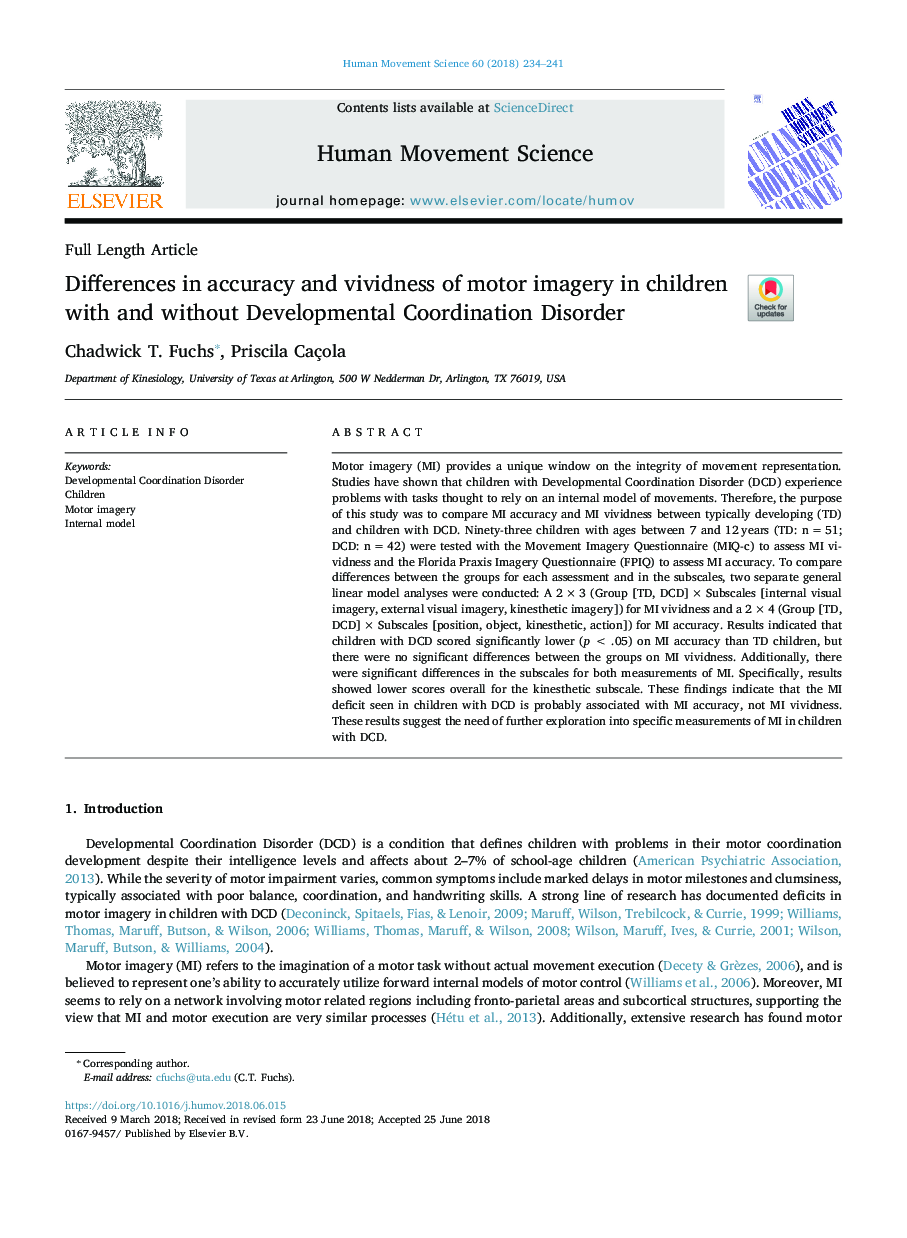| کد مقاله | کد نشریه | سال انتشار | مقاله انگلیسی | نسخه تمام متن |
|---|---|---|---|---|
| 7290894 | 1474204 | 2018 | 8 صفحه PDF | دانلود رایگان |
عنوان انگلیسی مقاله ISI
Differences in accuracy and vividness of motor imagery in children with and without Developmental Coordination Disorder
ترجمه فارسی عنوان
تفاوت در صحت وضوح تصاویر حرکتی در کودکان با و بدون اختلال هماهنگی رشد
دانلود مقاله + سفارش ترجمه
دانلود مقاله ISI انگلیسی
رایگان برای ایرانیان
کلمات کلیدی
اختلال هماهنگی رشد، فرزندان، تصاویر متحرک، مدل داخلی،
موضوعات مرتبط
علوم زیستی و بیوفناوری
علم عصب شناسی
علوم اعصاب شناختی
چکیده انگلیسی
Motor imagery (MI) provides a unique window on the integrity of movement representation. Studies have shown that children with Developmental Coordination Disorder (DCD) experience problems with tasks thought to rely on an internal model of movements. Therefore, the purpose of this study was to compare MI accuracy and MI vividness between typically developing (TD) and children with DCD. Ninety-three children with ages between 7 and 12â¯years (TD: nâ¯=â¯51; DCD: nâ¯=â¯42) were tested with the Movement Imagery Questionnaire (MIQ-c) to assess MI vividness and the Florida Praxis Imagery Questionnaire (FPIQ) to assess MI accuracy. To compare differences between the groups for each assessment and in the subscales, two separate general linear model analyses were conducted: A 2â¯Ãâ¯3 (Group [TD, DCD]â¯Ãâ¯Subscales [internal visual imagery, external visual imagery, kinesthetic imagery]) for MI vividness and a 2â¯Ãâ¯4 (Group [TD, DCD]â¯Ãâ¯Subscales [position, object, kinesthetic, action]) for MI accuracy. Results indicated that children with DCD scored significantly lower (pâ¯<â¯.05) on MI accuracy than TD children, but there were no significant differences between the groups on MI vividness. Additionally, there were significant differences in the subscales for both measurements of MI. Specifically, results showed lower scores overall for the kinesthetic subscale. These findings indicate that the MI deficit seen in children with DCD is probably associated with MI accuracy, not MI vividness. These results suggest the need of further exploration into specific measurements of MI in children with DCD.
ناشر
Database: Elsevier - ScienceDirect (ساینس دایرکت)
Journal: Human Movement Science - Volume 60, August 2018, Pages 234-241
Journal: Human Movement Science - Volume 60, August 2018, Pages 234-241
نویسندگان
Chadwick T. Fuchs, Priscila Caçola,
